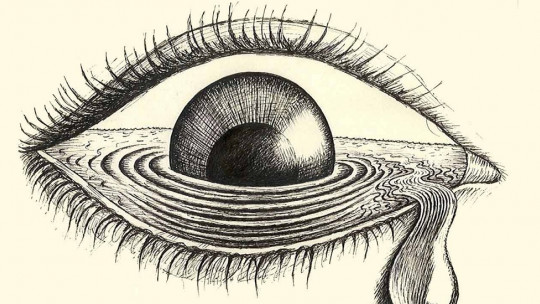
Suicide is a complex phenomenon that is of increasing concern as a widespread social problem. According to data from the World Health Organization (WHO), approximately 800,000 people die each year from suicide, which would be equivalent to one death every 40 seconds. This globally widespread problem affects people of all ages, genders and socioeconomic backgrounds, and is considered the second leading cause of death among young people aged 15 to 29.
To better understand and prevent this phenomenon, it is crucial to recognize its associated risk factors. Although mental illnesses, particularly depression, are commonly cited, suicide is usually the result of a combination of biological, psychological, social and environmental factors. Some risk factors include substance abuse, a history of trauma or abuse, chronic illnesses, financial problems, and troubled interpersonal relationships.
The cultural and social context also plays a fundamental role in the prevalence and perception of suicide. In some cultures, the stigma associated with suicide and mental illness can prevent people from seeking the help they need. Furthermore, suicide methods vary considerably between different regions, suggesting that prevention strategies must be tailored to specific contexts.
Is depression the only cause of suicide?
Throughout this article, we will understand suicide in greater depth as a social and global problem. We will seek to shed light on the multifactorial causes of this increasingly widespread and worrying phenomenon. Thus, we set out with the objective of avoiding the direct association between depression and suicide to understand its origin as a confluence of psychological, emotional, social and even cultural factors and symptoms.
Depression as a main factor
Clinical depression, also known as major depressive disorder, is one of the most significant factors associated with suicide. This mental disorder is characterized by the appearance of persistent sadness, loss of interest in activities that were previously pleasurable, changes in appetite and sleep, and feelings of worthlessness or guilt. These symptoms can be so overwhelming that they severely affect a person’s ability to function in their daily life.
Different studies have shown a strong correlation between depression and suicide. According to the American Psychological Association (APA), approximately 60% of people who commit suicide suffer from some type of depressive disorder or symptoms associated with it. Hopelessness, a common symptom of depression, has been identified as a key predictor of suicidal behavior. People who feel trapped in their emotional suffering and see no way out of their pain may consider suicide as an option.
Depression is not always obvious. Often, people who suffer from depression can hide their symptoms or minimize them, making it difficult for family, friends, and people around them to recognize their severity. This aspect underlines the importance of paying attention to the behavioral changes and mood of our close people.
Proper treatment of depression is crucial for suicide prevention. Psychological therapies, such as cognitive behavioral therapy, and antidepressant medications have been shown to be effective in managing depression. However, the stigma associated with mental disorders often prevents people from seeking help.
Other mental disorders related to suicide
In addition to depression, there are many other mental disorders or related symptoms strongly linked to the risk of suicide and suicidal behavior or ideation. In this section, we will comment on some of these to understand in more depth their main symptoms and influence.
1. Bipolar disorder
Bipolar disorder is characterized by extreme changes in mood, from episodes of mania, in which people may feel euphoric and full of energy, to episodes of severe depression. During these depressive episodes, people with bipolar disorder are particularly vulnerable to suicide. In fact, studies indicate that up to 20% of people with bipolar disorder die by suicide. Impulsivity during these manic episodes may also be related to suicidal tendencies or behaviors.
2. Schizophrenia
Schizophrenia is another mental disorder associated with a high risk of suicide. People with schizophrenia may experience hallucinations, delusions, and disorganized thinking, which can lead to a distorted perception of reality. These symptoms can be extremely distressing, and in some cases, people may feel driven to commit suicide to escape their suffering. Research shows that approximately 5-10% of people with schizophrenia end up committing suicide.
3. Borderline personality disorder (BPD)
Borderline personality disorder (BPD) is a disorder characterized by patterns of instability in interpersonal relationships, self-image, and affects, along with marked impulsivity. People with BPD often struggle with intense feelings of abandonment and emotional emptiness. Self-destructive behaviors, including suicide attempts, are common in this group. It is estimated that up to 10% of people with BPD die by suicide, and many more attempt suicide repeatedly.
Social and environmental factors
In addition to mental disorders, various social and environmental factors can significantly contribute to suicide risk. These factors include work stress, financial problems, bullying, trauma and abuse, among others. The interaction of these factors can increase a person’s vulnerability to suicide, especially when combined with a genetic predisposition or compromised mental health.
1. Work stress
Work stress is a factor that can lead to emotional exhaustion and feelings of hopelessness, particularly in high-pressure professions such as medicine, education, and military service. Work overload, lack of support, and feelings of inadequacy can trigger suicidal thoughts.
2. Economic problems
Financial problems, such as unemployment, poverty, and overwhelming debt, are also closely related to suicide risk. Financial difficulties can generate an intense feeling of failure and despair, leading some people to consider suicide as a way out of their problems.
3. Bullying
Bullying, known as bullying, is another significant cause, especially among young people. Victims of bullying often experience social isolation, low self-esteem and depression, factors that can increase the risk of suicide. Cyberbullying has added a new dimension to this problem, extending the reach and impact of bullying.
4. Trauma and abuse
Trauma and abuse, whether physical, emotional or sexual, have lasting effects on people’s mental health. Traumatic experiences can lead to post-traumatic stress disorder (PTSD), depression, and self-destructive behaviors increasing the risk of suicide.
5. Social and cultural environment
The social and cultural environment also influences the prevalence of suicide. In some cultures, the stigma associated with seeking help for mental problems can prevent people from accessing the resources they need. The lack of robust social support networks can also leave people isolated and without the help they need in times of crisis.
Prevention and treatment
Suicide prevention is a multifaceted challenge that requires an integrated and comprehensive approach. To effectively address this problem, it is crucial to implement prevention strategies that include early interventions, social support, and adequate access to mental health treatments.
1. Early identification and prevention
One of the most effective strategies is the early identification of people at risk.
This implies train health professionals, educators, and community members to recognize the warning signs of suicide, such as drastic changes in behavior, social isolation, and expressions of hopelessness. Public awareness campaigns also play a vital role in reducing the stigma associated with mental disorders and encouraging people to seek help.
2. Social support
Strengthening social support is essential. People with strong support networks, whether through friends, family, or community groups, are less likely to experience feelings of isolation and despair. Community programs and counseling services can provide a sense of belonging and emotional support, helping to reduce the risk of suicide.
3. Mental health treatments
Access to quality mental health treatment is another crucial pillar in suicide prevention. This includes psychological therapies such as cognitive behavioral therapy, which has been shown to be effective in reducing suicidal behaviors, as well as the use of antidepressant and mood-stabilizing medications. It is essential that these services are accessible and affordable to everyone, regardless of their financial situation.
4. Helplines and crisis services
Additionally, implementing helplines and crisis services can provide immediate assistance to people in times of desperation. These lines offer confidential support and can connect people to additional resources for long-term treatment and prevention.
Conclusions
In conclusion, although depression is a significant factor in many suicides, it is not the only cause. Mental disorders such as bipolar disorder, schizophrenia, and social and environmental factors also play a crucial role. Prevention requires a comprehensive approach that includes early interventions, social support, access to quality treatments and effective public policies. Only then can we effectively address and reduce suicide.








